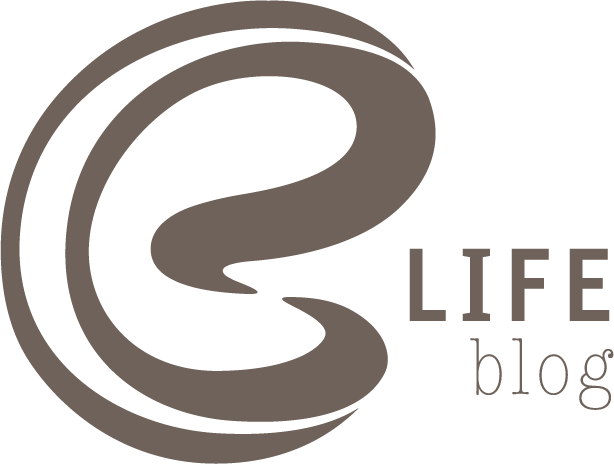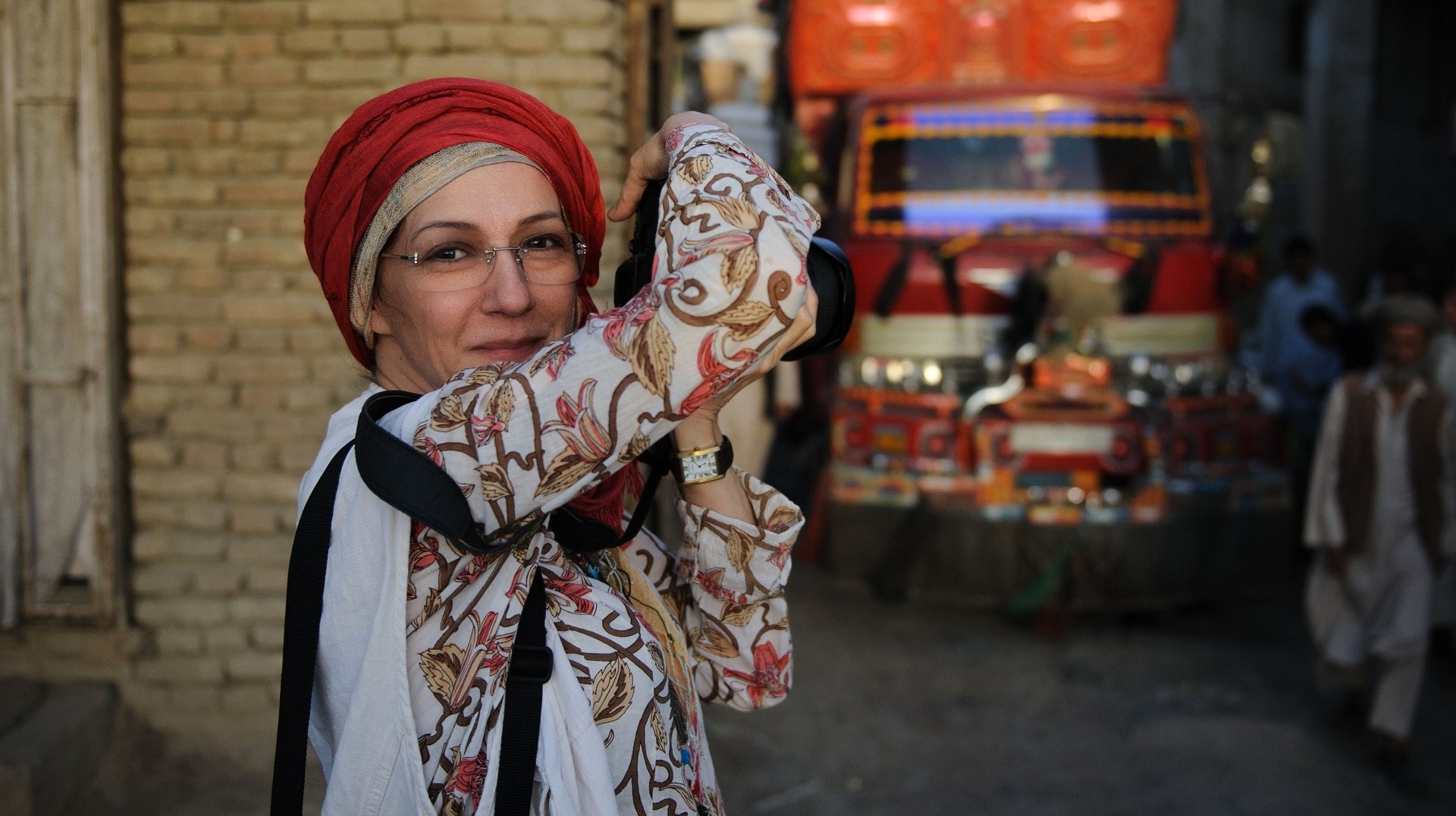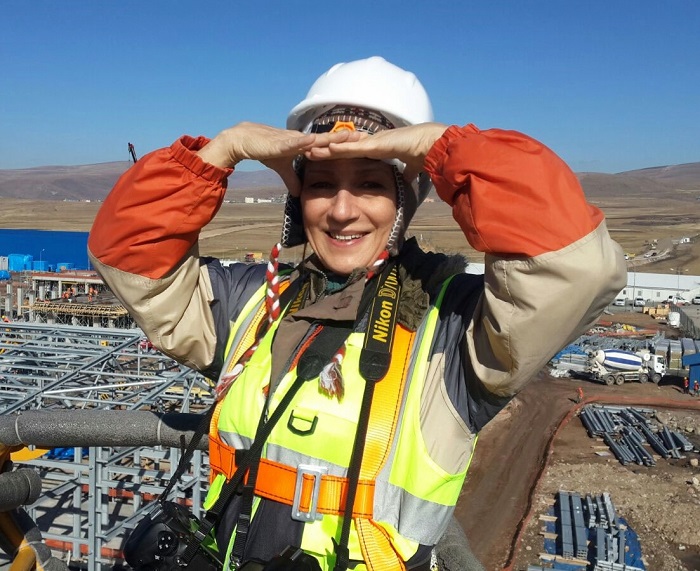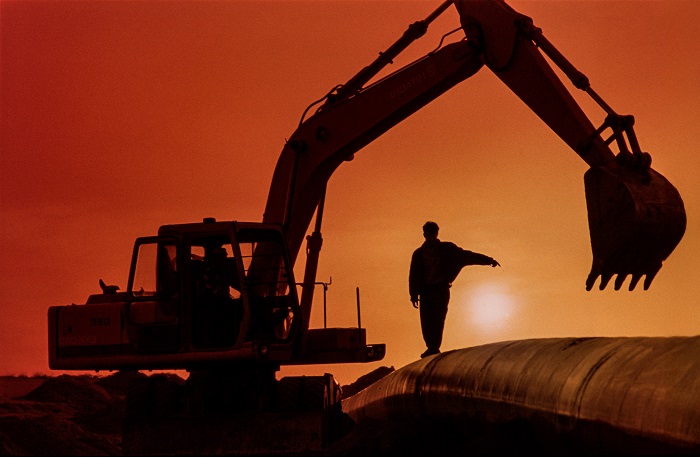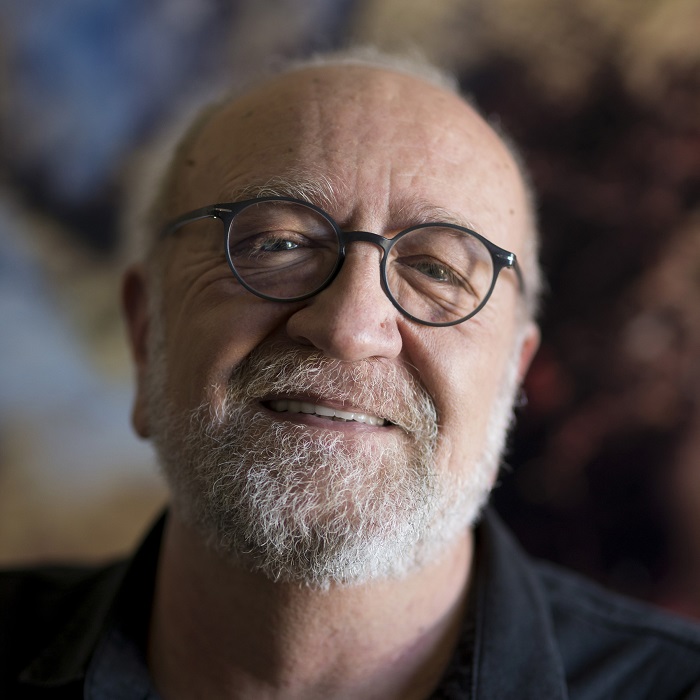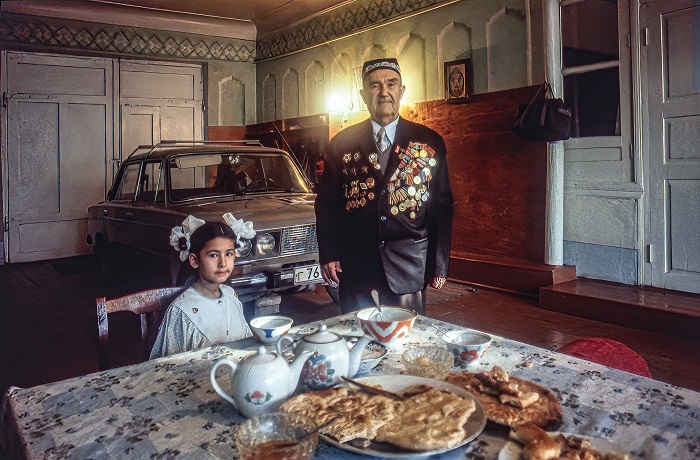The Eczacıbaşı Photographers Series continues to leave its mark on the cultural world by presenting Türkiye’s prominent photographers and their work through a retrospective lens. The fifteenth book in the series is dedicated to Gülnur Sözmen, one of Türkiye’s pioneers of industrial and documentary photography.
This publication features a broad selection of Sözmen’s work from the 1980s onward, spanning from heavy industrial factories to large construction sites and diverse geographies across the globe. Throughout her career, Sözmen created her work in predominantly male environments, documenting production processes and industrial settings with an aesthetic perspective under the concept of Homo Faber. She also portrays post-war societies, production dynamics, and daily life with her distinctive style through documentary projects stretching from Afghanistan to Azerbaijan, the Middle East to various regions of Asia.
For the Eczacıbaşı Life Blog, we spoke with Gülnur Sözmen about her journey in industrial and documentary photography and the power of photography in recording production processes. We also spoke with the book’s editor, Orhan Cem Çetin, about the contribution of the Eczacıbaşı Photographers Series to the field of photography, Sözmen’s inclusion in this prestigious collection, and the encounter between industrial photography and aesthetics.
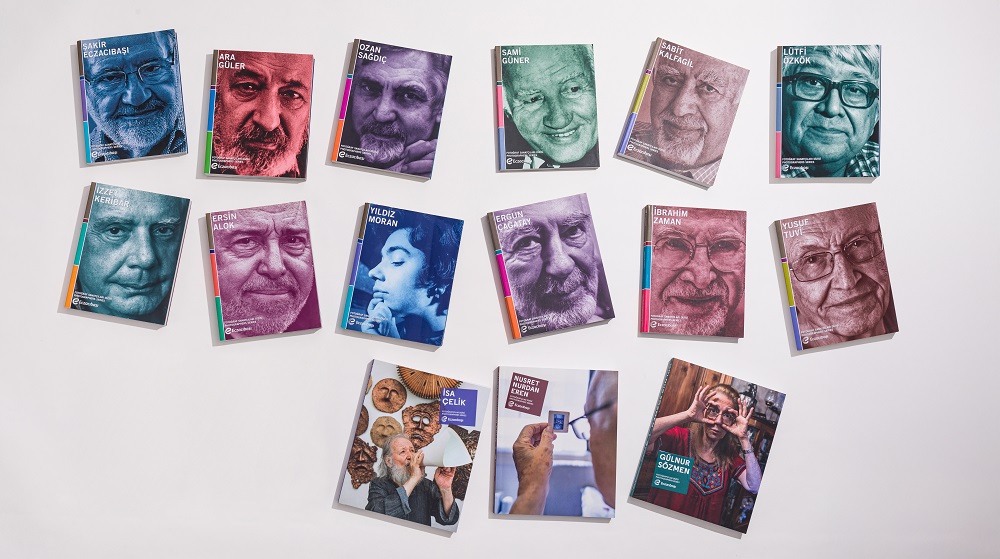
The Eczacıbaşı Photographers Series has published photography books for nearly 60 years. In the last 15 years, these books have been retrospectives of outstanding photographers. What does it mean to you to be included in the series?
This question takes me back 50 years and reminds me of those “butterfly” feelings I had at the time. On the one hand, my eyes welled up with tears; on the other, I felt the butterflies again. I still have a few black-and-white Eczacıbaşı yearbooks left from 50 years ago in my library. Back then - as far as I remember - the yearbooks featured selections of photos from various photographers rather than from a single photographer. I used to look at them with my heart trembling, asking myself, “Will I ever be able to be part of this?” At that time, I was 19 years old. In this sense, words can hardly express what this means to me.
Over the subsequent 50 years, many of the country’s valuable brands and trademarks have faded away. What makes me happiest is that Eczacıbaşı continues to uphold its exceptional tradition without succumbing to that decline.
Could you share the story of how you first started photography? What was your strongest motivation?
Being "impatient" and "curious" are my foremost traits. Although they can be exhausting, they have undeniably shaped my life.
Before I even learned the alphabet, I recognized colors and shapes - and I drew them. I began life by painting, and my definite goal was to become a painter. However, my impatience and my curiosity about how things come into being slowly altered my path. It felt as though photography required less patience - you could attain a result more quickly - and that was exactly the point where photography became my new beginning.
During my painting days, I would often stay up all night, obsessing over a particular detail, getting up to fix it, and in doing so, ruining the entire work. My impatience never allowed the painting to "rest" or "mature." Photography, at least initially, helped temper this wild impatience. Of course, as I advanced, I would come to learn that photography also demands the patience of a polar bear. One of my strongest motivations, as you asked, was precisely this: impatience seeking an outlet. The other was curiosity.
I constantly asked myself, "How does it happen? How does it come into being?" I started projecting comic strips onto frosted glass doors at home using a flashlight - essentially discovering photography and film without realizing it, driven purely by instinct and wonder. That question - "How does it happen?" - still captivates me.
When it came time for higher education, I wanted to continue painting but also study photography. That led me to apply to the State Academy of Fine Arts (Tatbiki - TGSYO). I took the Graphic Design entrance exams solely because the program offered photography courses — even though my natural fit would have been the Department of Decorative Painting, where I could have studied fresco, mosaic, and stained glass. But that department didn’t offer photography classes.
At the time, my role models shifted from Leonardo da Vinci, Michelangelo, and Gustav Klimt to Pedro Luis Raota and W. Eugene Smith. I was deeply influenced by the black-and-white tabloid-sized issues of Time-Life books published in those years. With these dreams and inspirations, I embarked on my journey into photography.
In those days, the best examples of photography were usually documentary and war photography. However, I had no opportunity to go to war zones. Without even realizing it, I created my own battleground. Let me quote something from my earlier interviews: “When I accidentally visited a steel foundry, I felt as though I had gone to war — and somehow, I instinctively knew this world. I realized that the inferno I witnessed was actually life’s struggle itself. This space, with its dramatism, myriad stories, hardships, and the thin, sometimes transparent, sometimes permeable veil between dream and reality, struck me straight in the heart. I found a domain where I truly understood myself and could express it. Fifty years have passed in this field, and not for a single moment have I regretted it.”
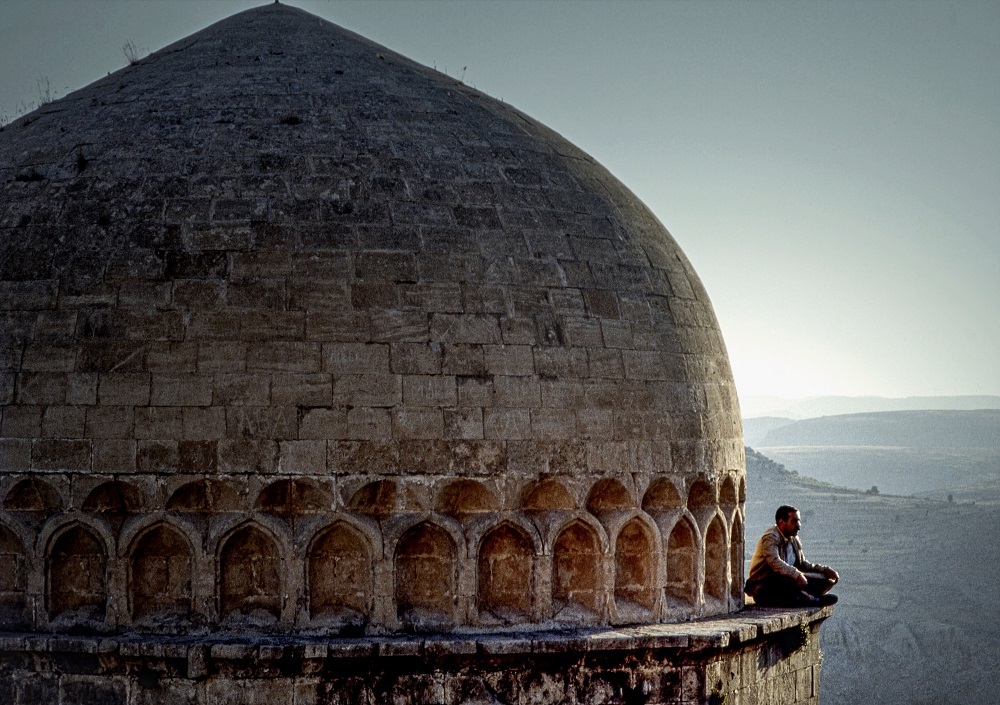
Photography has historically been a field where women have been relatively less visible in Türkiye, especially if you were entering the profession back in the 1980s. You are the second woman artist to be featured in the Eczacıbaşı Photographers Series after Yıldız Moran. You have worked in industrial and documentary photography, often shooting in challenging geographies. How did you decide to work in these areas? What does being a woman photographer mean to you?
Let me start by answering the last part of your question about being a woman photographer. My answer is clear: “Bad luck.”
Being a woman photographer means being forced to start out behind everyone else. The country’s culture and customs label us. Even the expression “woman photographer” is itself a sexist label and serves to reinforce this belief. I’m very much against any kind of label that holds us back from the start.
What does “woman photographer” mean? Does it mean that what I create is worthless, and I’m only successful because I’m a woman? If I were a man and took the same photographs, would they be considered ordinary? The phrase “especially as a woman” makes me angry. It's as if I wasn't supposed to achieve anything, and just because I did, it becomes noteworthy. I encounter this constantly on photography sets; people watch us as if we were blue monkeys. This is a typical mirror of societal beliefs.
That is why I’ve faced many challenges throughout my 50-year journey. When I was young, I used to describe my experiences as a ball of trouble, sparking endlessly like a welding electrode.
My team and I gained a lot of experience over time. Whenever we arrive on a set, the problems begin immediately. We just look at each other and laugh, saying, “Here we go, the curtain has risen.” Now, I’m no longer young, and the troubles have dwindled because our experience guides us.
The reason why there are so few women in this field is the social pressure on personal choices. This is true not only in photography but across many areas. Society and family often erect an invisible wall around women. Those who dare to challenge it roll up their sleeves and fight; those who can’t, don’t — and that’s not a matter of cowardice, simply a choice. At this point, it’s more appropriate to speak of "brave women" rather than "women photographers."
In many countries, women who rejected the belief that “certain jobs are not suitable for women” paid dearly for it — some even with their lives. Being unable to take that risk is not cowardice; it’s a matter of individual decision.
What I have done, most likely, is an act of rebellion against this dreadful belief system. Industrial and documentary photography form the very core of my work, and I have never hesitated to go wherever these fields have taken me.
You have worked — and continue to work — under both socially and physically challenging conditions. How do you prepare yourself for such demanding shoots?
Experience guides us. First and foremost, every woman in our country instinctively knows the behavior patterns that arise from living in a male-dominated society. Ignorance in this matter is unacceptable and carries a heavy price. This isn’t only the case in Türkiye; it’s true across the entire Middle East and much of Asia. Preparation begins with this awareness.
You must study the geography of the country you’re traveling to, consider the climate conditions during the time of your trip, and plan your clothing, supplies, and equipment accordingly. Securing the necessary permits for entry is absolutely critical; even the smallest omission can lead to severe hardships.
If the project involves an industrial facility, then additional steps must be taken in advance: obtaining entry permits, acquiring work certifications, obtaining permits for working at heights, and sometimes even taking specialized on-site courses. Without these, you won't be allowed into high-risk areas, such as oil fields in Kazakhstan or Azerbaijan, where even mobile phone use is restricted.
Moreover, these projects often take place under extreme weather conditions — sometimes at minus 40 degrees Celsius in January, sometimes at plus 60 degrees Celsius in July. There’s no luxury of protest; you always have the option to refuse at the start, but if you accept, you must fully comply.
Working in these conditions requires taking excellent care of both your mental and physical health — and acting accordingly. We’re extremely cautious about preventing injuries such as cuts, scrapes, insect bites, and blisters caused by heavy boots during shoots. This meticulous preparation is something that comes only with experience.
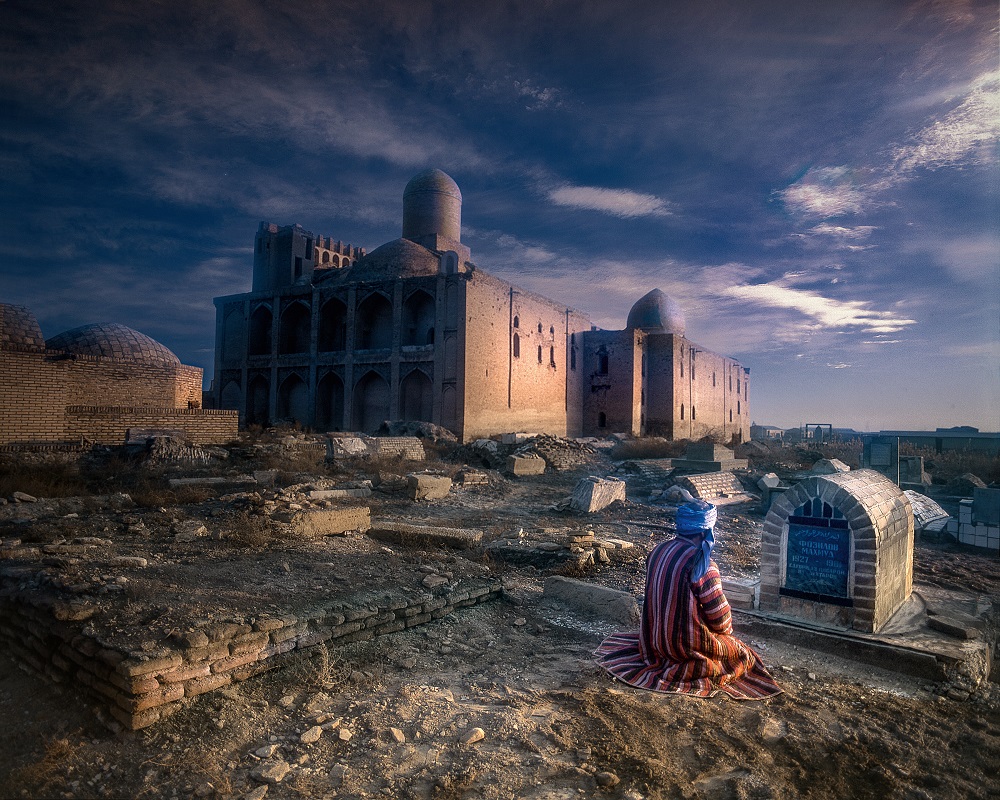
Your photographs often emphasize the concept of Homo Faber - "the human who makes and creates." In your view, what role does photography play in documenting production and understanding societies’ production processes?
Industrial photographs are essentially the "storyboards" - the visual novels - of production processes and their evolving histories. They play a leading role in preserving today’s production dynamics for the future. In fact, they are the "stars" of this effort.
These visual documents will outlive us and accomplish much more than we ever could. They transmit the spirit of production, labor, technology, and transformation across time. And they do so not only by recording facts but by presenting them through an aesthetic lens.
A production process is not simply about machinery or mechanical systems. It’s about human sweat, intellectual effort, teamwork, and the emotional commitment of those involved. Photography reveals all these intertwined layers. Perhaps a production scene that would be difficult to fully capture through words can be felt - deeply and powerfully - in a single photograph.
For me, photography is not just about capturing images; it’s the memory of time, labor, and humanity itself. The concept of Homo Faber - the human who produces and creates tools - is at the core of this perspective.
Is there a particular production process that you found especially impressive? Which types of facilities are particularly meaningful for you to photograph?
Refineries, oil fields, and heavy industry sites interest me greatly. Steel plants, in particular, take me straight to heaven.
Has there ever been a photograph you regretted not taking or wished you yourself had taken? Is there an image you’re still chasing?
“I wish I’d taken such and such photograph” requires an envy I don’t have. I’m not chasing after a particular image, either. In any case, when I see it, I’ll capture it. However, recently there was moment, a scene I deeply regret missing:
Our team had already arrived at the site and was waiting for me. I had been struggling with flight delays on my way back from another country and felt miserable. I was exhausted and stressed by several setbacks. When the driver picked me up for the road trip to the facility, he suggested I sit in the back seat to rest. I carefully packed my camera in my bag to avoid dropping it if I fell asleep, and then drifted off.
Instinctively, I opened my eyes at one point. A dense fog had settled. Behind the mist, the city appeared as if it were floating on a cloud. The lights were breathtaking. Before I could fully gather myself and say, “Stop now!” we had already sped past on the highway. We couldn’t find an exit to turn back and pass the same point again. It still pains me to this day.
You have been the editor of the Eczacıbaşı Photographers Series for the past three years. How does it feel to be part of this project? How do you think the series contributes to the field of photography in Türkiye?
It’s safe to say that the series is important on many levels. I proudly took over this role from my dear friend Merih Akoğul. When you list all the photographers featured before and during my term as editor, you essentially create a “hall of fame” — a gallery of stars. The selection alone shows who has stood out, who has been influential, inspiring, and groundbreaking in the history of photography in Türkiye.
Since the books are comprehensive, each one features a careful selection that represents the photographer’s body of work, along with a detailed biography and an introductory text that presents and interprets their art, approach, and personality. These texts are also translated into English, and the books are published bilingually. In this sense, the series is becoming a growing reference source year by year.
We work with Türkiye’s leading graphic designer, the master of masters, the esteemed Bülent Erkmen. The books are printed with flawless precision by Ofset Yapımevi, one of the country’s top printing houses, renowned internationally. In this manner, the series has set the standards and become a benchmark in photography publishing. For living photographers, being featured in this series has become an important goal and a major source of prestige — a motivation to keep creating.
You are not only a photographer but also an educator with nearly half a century of experience on the faculties of various universities. Therefore, you have reflected on and contributed to photography from many different angles. How do you evaluate the field of photography in Türkiye?
Yes, I’ve been involved in this field for a long time - first as an amateur, then as a professional - as both an artist and an educator, I’ve even taken on sector-wide responsibilities.
Unfortunately, I’ve witnessed firsthand Türkiye’s disadvantage since the 1970s in fields that rely heavily on technology, including photography. In the past before the 2000s, during the analog photography era - aside from a few small businesses that bottled basic chemicals for black-and-white darkroom processes, there was almost no domestic production or product development in this area.
Forget about manufacturing complex engineering products like lenses, film, or cameras, even professional camera bags or tripods have never been produced here, and still aren’t to this day.
If you don’t produce technology in a field, it’s very difficult to produce culture there. The first academic photography department - hard to believe, but true - was established at Mimar Sinan Fine Arts University in 1978.
As a result, the number of Turkish photographers with international recognition and influence is very small. On the other hand, when technology is limited, individuals - especially in the arts - are sometimes compelled to work more conceptually, politically, and poetically because of those constraints.
You can especially see this trend among younger generations who were born into the internet age.
Local art institutions, too, have been giving photography more space than before, in line with global trends. In this relatively barren environment, our book series, the photography gallery at İstanbul Modern, the museum’s own photography collection, and the upcoming Bülent Eczacıbaşı Foundation Photography Research Center (BEVFAM) - which is currently under preparation and will be announced in the coming winter - are all extremely important contributions.
You have known Gülnur Sözmen for a long time. Now you have worked together again for this book. As a photographer, what aspect of her work impacts you the most? How would you define her place in Turkish photography history?
It made both of us very happy to come together for this book, because in the 1990s, under the roof of the Professional Promotional Photographers Association (PTFD), which has long since ceased its activities, we used to meet and work toward common ideals.
First and foremost, Gülnur Sözmen’s inclusion in the series already signifies that she possesses the qualities I mentioned earlier: She is a star who stands out, is influential, inspiring, groundbreaking, and has produced original work in the history of photography in Türkiye.
In my view, she is one of the most important, most experienced, and most distinctive figures to have emerged in the field of industrial photography. In fact, during the 1990s, she was unparalleled in this area.
Moreover, despite the serious social barriers imposed on women - especially in the most demanding branch of promotional photography - and despite not having had a mentor, she managed, entirely through her own efforts, to produce original work of a high aesthetic standard. She carried this passionate and resilient attitude into her later travel photography projects across challenging geographies as well.
Gülnur also played an important role in strengthening professional associations for photographers and copyright issues in Türkiye. With all these qualities, she is an iconic figure in the field of photography. Her body of work also sheds light on Türkiye’s industrial history. Although she is often categorized as a promotional photographer, at her core, she is truly a documentarian.
In Gülnur Sözmen’s framing, how does industry transform into a visual narrative, and how does her approach differ from classical industrial photography?
During the meetings we held for the book, as I looked more and more at Gülnur’s works, the term Homo Faber - “the human who makes and creates” - kept coming to mind.
It turns out that this concept was already part of her world, and she had even named one of her exhibitions after it.
I think what excites Gülnur the most is exactly this: Individuals who “accomplish things far bigger than themselves” become the subjects, the shining figures in her frames.
In industrial facilities, repeated forms create geometries and rhythms; light beams, steam, showers of sparks, monumental machines, and other extraordinary, impressive elements present aesthetic opportunities for photographers.
Gülnur senses this aesthetic intuitively and designs her photographs with the human being, not the machine, at the center of the story. She never leaves anything to chance. She creates lighting so skillfully that it feels invisible, uses technical possibilities to their limits, but does all of this without making the photographs feel artificial.
When selecting photographs from Gülnur Sözmen’s archive for the book, what was important to you? How did the selection process unfold?
Understanding her body of work and internalizing her intentions were prerequisites for this task.
Only then could we establish proper selection criteria.
We met repeatedly, spending days and hours, either in front of a screen or over a light table, looking at thousands of photographs one by one, often with a magnifying glass, and narrowing them down step by step. We’re talking about an archive that spans over 50 years.
During this process, the difference in perspective between the photographer and the editor became very clear. For example, there were many photographs that I wanted to include in the book, but Gülnur found them unnecessary or even ordinary. Thanks to her vast experience and the reflexes she had developed over time, she had produced these photographs so easily that she couldn’t understand why I appreciated them.
Of course, there were also iconic frames - the ones she insisted on including if I overlooked them - which naturally made it into the selection. After months of elimination rounds, we passed a significantly narrowed-down selection to Bülent Erkmen. He performed the final selection and arranged the sequencing. It was like designing an exhibition where the pages were the space. Even at this stage, we confirmed everything together, over and over again.
It was essential that everyone involved was satisfied with the final outcome - and, just like with the previous books in the series, we were able to achieve that again.
